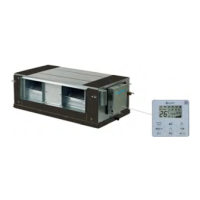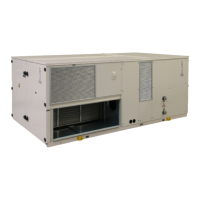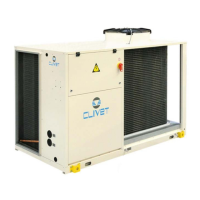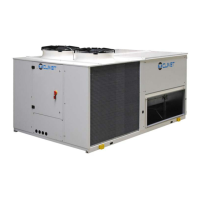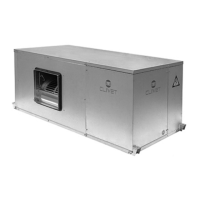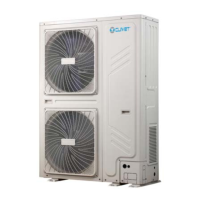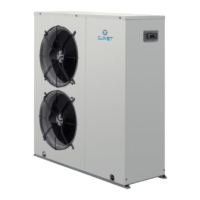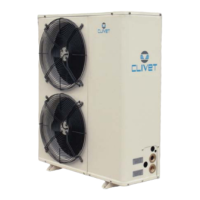40 CSRN-XHE2 15.2-44.4 M08F40N15-02
10.6 Gas heating module with 2-stage control
System maintenance booklet
t
It must be kept in the place of installation of the unit
t
It must be lled-in upon commissioning
t
It must be updated with the results of the periodical checks, of the routine and extraordinary maintenance interventions.
Gas connection
t
Read the gas heating module manual.
t
Connection must be carried out by qualied personnel.
t
use certied components and comply with the local standards in force
t
install on the gas connection: cock, large section lter and anti-vibration joint
t
check the supply pressure is correct and stable, in particular where more uses are inserted on the same line.
The heating module includes:
t
hot air generator with condensation and integrated modulating adjustment, power with methane gas
t
kit for transformation of power with liqueed petroleum gas (LPG)
t
kit of steel chimney for exhaust fumes
t
All the control and safety devices
1. GAS COCK
2. GAS FILTER (LARGE SECTION)
3. ANTI-VIBRATION JOINT
4. GAS FILTER (SMALL SECTION)
5. SAFET GAS SOLENOID VLAVE
6. PRESSURE STABILISER
7. MAIN GAS BURNER SOLENOID VALVE
8. PILOT BURNER GAS SOLENOID VALVE
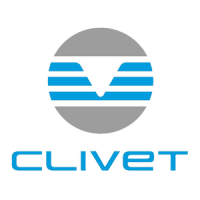
